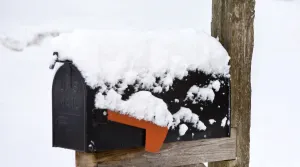Keep track of all neighbor problems by writing down when things happen, what you see, and how it affects you. Take pictures and videos with clear dates and times shown. Keep a daily list of issues and times you tried talking to your neighbor. Call the police or city officials to file reports when needed – this creates proof on record. Store all this information in a safe place and make copies. Good records make it easier to take legal steps if you need to.
Key Takeaways
- Maintain a detailed written log of all incidents with dates, times, descriptions, and witness information to establish patterns of nuisance behavior.
- Take clear, date-stamped photos and videos of disturbances, including identifiable landmarks and context to support your claims.
- File official reports with local authorities and keep copies of all documentation, including case numbers and officer names.
- Document all communication attempts with your neighbor through emails, texts, or conversations about the nuisance issues.
- Organize your evidence systematically, including incident logs, photos, videos, and official reports, with secure backup copies.
Essential Elements of Legally Valid Documentation
To make your records strong in court when dealing with problem neighbors, you need to write down key details about each event. Be sure to list the dates, times, and where things happened, along with a clear picture of what occurred.
Take photos and videos with clear date stamps, and keep them in a safe place. Ask other neighbors or visitors who saw what happened to give their side of the story – this helps back up your claims.
Make note of any local rules about noise or other issues that your neighbor might be breaking. Keep track of every time you try to talk to your neighbor about the problem, whether through email, text messages, or face-to-face talks.
This shows you tried to work things out before going to court.
Building Your Evidence Portfolio With Photos and Videos
Taking clear pictures and videos helps prove problems with neighbors. Make sure your photos are bright enough and not blurry. Add dates to your photos and include easy-to-spot things like buildings or trees to show where the pictures were taken.
When making videos, turn your phone sideways and try to keep it steady. Record the whole problem from start to finish. You might want to put up security cameras to watch what happens when you’re not there.
Keep your photos and videos safe by saving them in different places. Put them in order by date and write down what happened in each one.
Keeping a Detailed Written Log of Incidents
A written record of problems with neighbors works best when paired with pictures and videos. Good notes help show how often issues happen and can reveal patterns of bad behavior that might need legal help.
When writing down neighbor problems:
- Write the day, time, and clear details about what happened.
- List who saw it and what people said to each other.
- Write down how each problem affected you, like lost sleep or broken things.
Taking good notes builds a strong case that helps when talking to lawyers or mediators about fixing the problem.
Working With Authorities and Filing Official Reports
Keep track of problems with neighbors by reporting them to police and city officials. Following the right steps to file reports creates a record that could help if you need to take legal action later.
Call the right department based on what’s wrong. Call police for noise problems, and contact code enforcement for property issues.
Know the rules in your area since each city handles nuisance complaints differently. Get copies of every report you file and keep track of case numbers, officer names, and what happened.
Organizing and Preserving Your Documentation Records
Keeping good records of problems with neighbors needs a clear system for saving and finding documents. Good record-keeping makes sure you can find and use evidence when you need it, especially for legal matters.
Simple tools like computer folders, online storage, and paper files help you keep everything in order.
- Make a list that shows all incidents by date and time, with clear numbers for each one.
- Use the same way to name all files, whether they’re pictures, videos, or letters.
- Save extra copies of computer files in different safe places and keep paper copies in containers that won’t get wet.
This setup helps you find specific records quickly while keeping all your documents safe and useful.
Frequently Asked Questions
Can I Legally Record My Neighbors Without Their Knowledge or Consent?
Recording rules are different in each state, with some states being stricter than others about privacy and permission. You can usually record people in public places, but you need their okay to record them in places where they expect privacy.
How Long Should I Document Neighbor Issues Before Taking Legal Action?
Record neighbor problems for at least one to two months to show they keep happening. If your neighbor does something really bad, you can take action right away. For smaller problems, keep track for a longer time to prove it’s a real issue.
What Behaviors Are Not Considered Legally Actionable Nuisances?
Regular noises during daytime hours, pets acting normally, kids at play, basic home upkeep, and everyday neighborhood activities are not usually treated as legal nuisances that can be taken to court.
Should I Inform My Neighbor That I’m Documenting Their Actions?
Being upfront with neighbors is often best, but sometimes it’s safer to keep quiet about recording their behavior. Talk to a lawyer first to protect yourself and stay within the law while gathering evidence.
Can Social Media Posts About Neighbor Disputes Be Used as Evidence?
Social media posts can be used as proof in neighbor fights. Courts check if these posts are real and trustworthy. Taking pictures of posts, noting when they were made, and saving them properly can help prove what happened between neighbors.
Conclusion
Proper documentation of neighbor nuisance issues forms the foundation for successful legal action. At Ace California Law, we help clients build strong cases through detailed logs, photo and video evidence, official reports, and organized record-keeping. This step-by-step approach shows clear patterns of behavior, provides solid proof, and builds a stronger legal position. When paired with proper authority involvement, good documentation significantly boosts your chances of solving the problem through legal channels.






